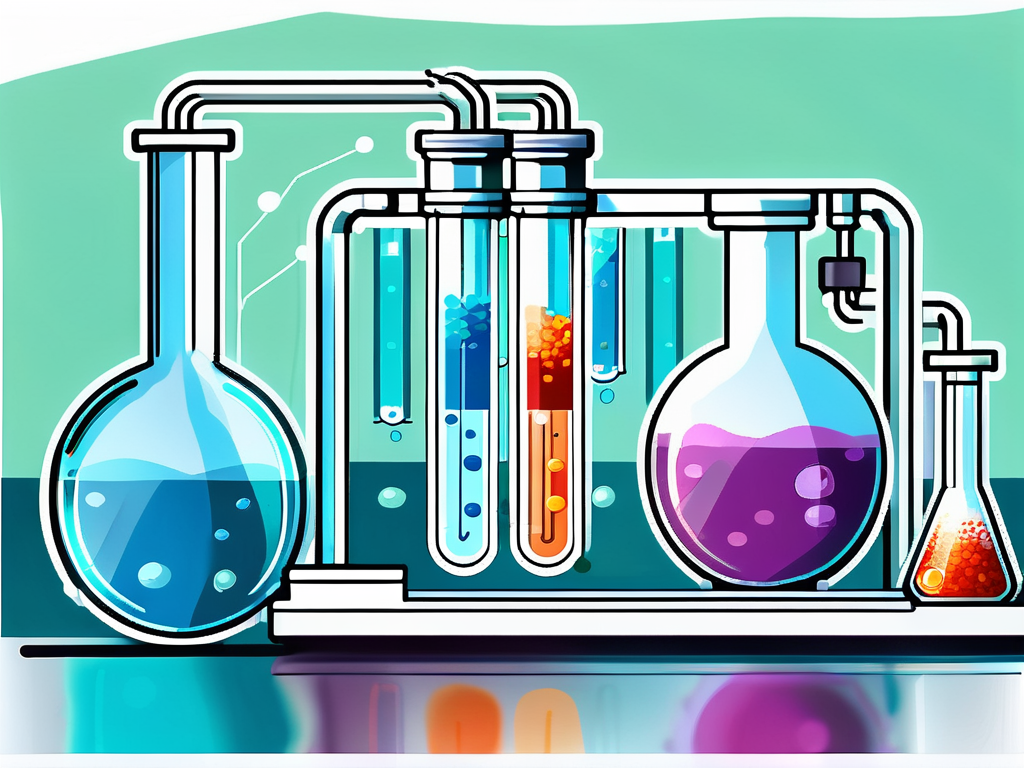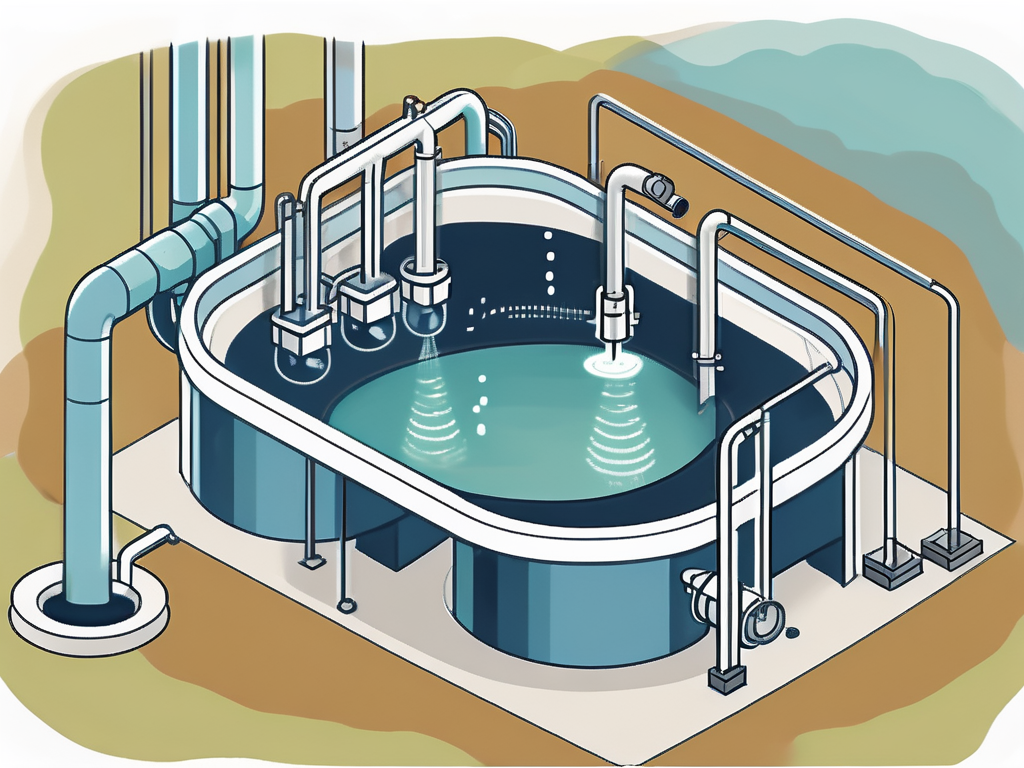
Emerging Contaminants: Wastewater Treatment Explained
Wastewater treatment is a critical process that ensures the safety and sustainability of our water resources. This process involves the removal of contaminants from wastewater to make it safe for discharge back into the environment or for reuse. One of the major challenges in wastewater treatment is the presence of emerging contaminants. These are substances that were not previously detected or are being detected at levels that may be harmful to human health and the environment.
Emerging contaminants can come from a variety of sources, including pharmaceuticals, personal care products, industrial processes, and agricultural activities. They can include substances like endocrine disruptors, pharmaceuticals, and personal care products, heavy metals, and more. These contaminants pose a significant challenge to wastewater treatment because they are often not completely removed by conventional treatment processes and can therefore end up in our waterways and drinking water sources.
Understanding Emerging Contaminants
The term "emerging contaminants" refers to any synthetic or naturally occurring chemical or microorganism that is not commonly monitored in the environment but has the potential to enter the environment and cause known or suspected adverse ecological and(or) human health effects. In some cases, detection of novel contaminants may be due to the development of new analytical techniques or the identification of new sources of contamination.

Emerging contaminants can be broadly categorized into pharmaceuticals and personal care products (PPCPs), endocrine disrupting compounds (EDCs), perfluorinated compounds (PFCs), and nanomaterials. Each of these categories includes numerous specific substances, each with its own properties, sources, and potential impacts on human health and the environment.
Pharmaceuticals and Personal Care Products (PPCPs)
Pharmaceuticals and personal care products (PPCPs) are a diverse group of emerging contaminants that include prescription and over-the-counter therapeutic drugs, veterinary drugs, fragrances, lotions, and cosmetics. These substances are often introduced into the environment through human activity, such as the use and disposal of products containing these substances.
PPCPs are of concern because they are often not completely removed during conventional wastewater treatment and can therefore end up in surface and groundwater. Some PPCPs are bioactive and can affect aquatic organisms by disrupting their normal biological functions. In addition, some PPCPs can bioaccumulate in organisms, leading to higher concentrations in their tissues over time.
Endocrine Disrupting Compounds (EDCs)
Endocrine disrupting compounds (EDCs) are substances that can interfere with the normal functioning of the endocrine system in humans and animals. The endocrine system is responsible for regulating a wide range of biological processes, including growth, development, metabolism, reproduction, and behavior.
EDCs can mimic or interfere with the action of hormones, leading to a variety of potential health effects. They can be found in a wide range of sources, including pesticides, plastics, cosmetics, and pharmaceuticals. Like PPCPs, EDCs are often not completely removed during conventional wastewater treatment and can end up in the environment.
Challenges in Removing Emerging Contaminants
Emerging contaminants pose significant challenges to wastewater treatment due to their diverse chemical structures, low concentrations, and high resistance to conventional treatment processes. Traditional wastewater treatment methods, such as activated sludge or trickling filters, are often ineffective at completely removing these contaminants.
Moreover, the detection and monitoring of emerging contaminants can be challenging due to the lack of standardized methods and the need for highly sensitive analytical techniques. As a result, the presence and impact of these contaminants in the environment are often underestimated.
Limitations of Conventional Treatment Processes
Conventional wastewater treatment processes are designed to remove suspended solids, biodegradable organic matter, and pathogens. These processes typically involve primary treatment (physical separation of solids), secondary treatment (biological degradation of organic matter), and tertiary treatment (further removal of solids and disinfection).
However, these processes are often ineffective at removing emerging contaminants, which are typically present at low concentrations and have diverse chemical structures that make them resistant to degradation. For example, many PPCPs and EDCs are designed to be stable and resistant to degradation in the human body, which also makes them resistant to degradation in the environment.
Need for Advanced Treatment Technologies
The limitations of conventional wastewater treatment processes have led to the development of advanced treatment technologies designed to remove emerging contaminants. These technologies include advanced oxidation processes, activated carbon adsorption, nanofiltration, and reverse osmosis.
Advanced oxidation processes (AOPs) involve the generation of highly reactive radicals that can degrade a wide range of organic contaminants. Activated carbon adsorption involves the adsorption of contaminants onto the surface of activated carbon. Nanofiltration and reverse osmosis are membrane processes that can remove contaminants based on their size and charge.
Advanced Treatment Technologies for Emerging Contaminants
Advanced treatment technologies are increasingly being used to remove emerging contaminants from wastewater. These technologies can provide a higher level of treatment than conventional processes, making them more effective at removing these contaminants.
However, the implementation of advanced treatment technologies can be challenging due to their high cost, energy requirements, and the need for skilled operation and maintenance. In addition, these technologies often produce a concentrated waste stream that requires further treatment or disposal.
Advanced Oxidation Processes (AOPs)
Advanced oxidation processes (AOPs) are treatment processes that involve the generation of highly reactive radicals, such as hydroxyl radicals. These radicals can react with a wide range of organic contaminants, leading to their degradation.
AOPs can be effective at removing a wide range of emerging contaminants, including PPCPs, EDCs, and PFCs. However, the effectiveness of AOPs can be influenced by a variety of factors, including the specific contaminants present, the water matrix, and the operating conditions.
Activated Carbon Adsorption
Activated carbon adsorption is a treatment process that involves the adsorption of contaminants onto the surface of activated carbon. Activated carbon has a high surface area and can adsorb a wide range of organic contaminants.
Activated carbon adsorption can be effective at removing a wide range of emerging contaminants, including PPCPs, EDCs, and PFCs. However, the effectiveness of activated carbon adsorption can be influenced by a variety of factors, including the specific contaminants present, the water matrix, and the operating conditions.
Future Directions in Wastewater Treatment for Emerging Contaminants
The presence of emerging contaminants in wastewater and the environment is a growing concern that requires ongoing research and innovation. Future directions in wastewater treatment for emerging contaminants may involve the development of new treatment technologies, the optimization of existing technologies, and the implementation of source control measures.
Research is also needed to improve our understanding of the fate and transport of emerging contaminants in the environment, their impacts on human health and the environment, and the effectiveness of different treatment technologies at removing these contaminants. This knowledge can inform the development of effective strategies for managing emerging contaminants in wastewater and the environment.
Development of New Treatment Technologies
Research is ongoing to develop new treatment technologies that can effectively remove emerging contaminants from wastewater. These technologies may involve novel materials, processes, or combinations of processes.
For example, research is being conducted on the use of novel adsorbents, such as biochar and nanomaterials, for the removal of emerging contaminants. Other research is focused on the development of novel biological treatment processes, such as those involving specialized microorganisms or enzymes.
Optimization of Existing Technologies
In addition to the development of new treatment technologies, research is also being conducted to optimize existing technologies for the removal of emerging contaminants. This may involve optimizing the operating conditions, improving the design of the treatment system, or combining different treatment processes.
For example, research is being conducted to optimize the operating conditions of AOPs for the removal of specific emerging contaminants. Other research is focused on improving the design of activated carbon adsorption systems to increase their effectiveness at removing emerging contaminants.
Implementation of Source Control Measures
Source control measures involve reducing the introduction of emerging contaminants into the environment. This can be achieved through a variety of measures, including the proper disposal of pharmaceuticals and personal care products, the use of less harmful substances, and the implementation of best management practices in industries and agriculture.
Source control measures can be an effective way to manage emerging contaminants, as they address the problem at its source. However, the implementation of source control measures requires the cooperation of various stakeholders, including the public, industries, and government agencies.
Conclusion
Emerging contaminants pose significant challenges to wastewater treatment and the protection of our water resources. However, through ongoing research and innovation, we can develop effective strategies for managing these contaminants and ensuring the safety and sustainability of our water resources.

Advanced treatment technologies, such as AOPs and activated carbon adsorption, can provide a higher level of treatment than conventional processes, making them more effective at removing emerging contaminants. However, these technologies require careful implementation and optimization to ensure their effectiveness and sustainability.



